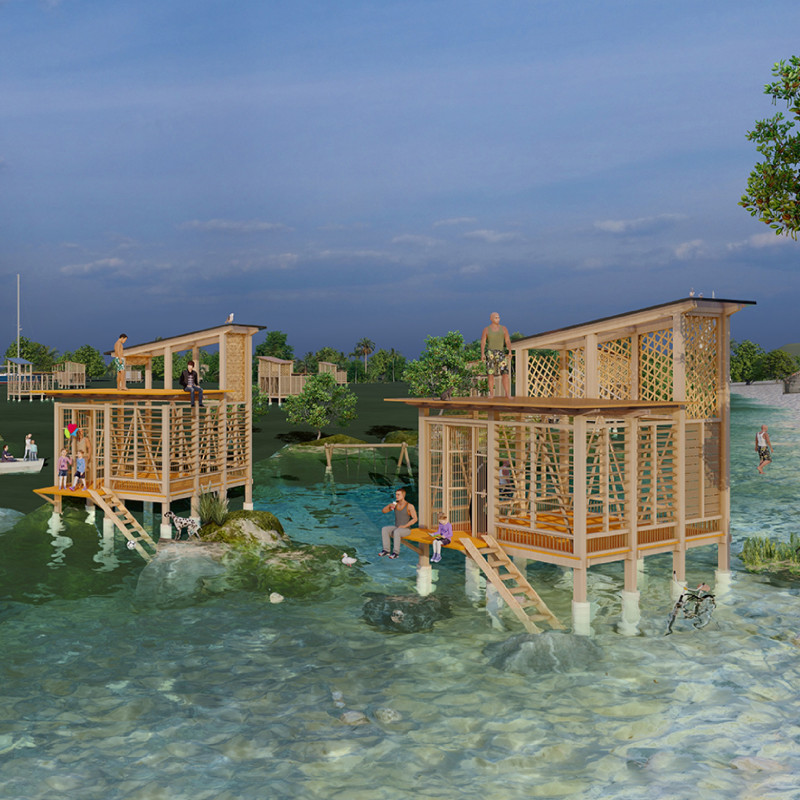5 key facts about this project
The project is rooted in the notion of creating space that resonates with its surroundings, acknowledging both the historical context and the natural landscape. Taking cues from the local architecture, this design employs a variety of materials, including polished concrete, timber, and glass, to forge a connection between the built environment and the earth. The use of polished concrete not only emphasizes the durability and low maintenance nature of the structure but also reflects a modern sensibility that aligns with sustainable practices. Timber, on the other hand, brings warmth and a tactile quality to the spaces, effectively creating an inviting atmosphere. Glass is thoughtfully incorporated, facilitating an abundance of natural light while providing transparent views that connect the indoor spaces to the exterior landscape.
Throughout the project, careful consideration is given to the layout and spatial organization. Key areas are strategically positioned to enhance user experience and functionality. The circulation paths are intuitively designed, guiding occupants through the space in a way that encourages exploration and interaction. Each element is meticulously planned to contribute to the holistic experience of the project, ensuring that all spaces, whether communal or private, serve their intended purpose effectively.
The architectural plans reveal an emphasis on open-plan living that promotes flexibility and adaptability. Such design choices not only cater to modern lifestyles but also provide the opportunity for the spaces to evolve over time. Furthermore, architectural sections illustrate how the vertical dimensions enhance the sense of space, introducing varying ceiling heights that create interest and dimension within the interior environments.
Unique design approaches are evident in the integration of sustainable systems, ensuring that the project adheres to environmentally responsible practices. These systems may include rainwater harvesting structures, solar panels, and natural ventilation systems, all designed to minimize the ecological footprint while maximizing energy efficiency. The careful selection of materials and technologies substantiate the project's commitment to sustainability and environmental stewardship.
The interplay of light and shadow is another intriguing aspect of this design, as strategically placed windows and overhangs control the natural light entering the space. This aspect not only enhances the aesthetic quality of the project but also improves energy performance by reducing reliance on artificial lighting throughout the day.
In terms of landscape design, the project pays homage to its natural environment. Outdoor spaces are thoughtfully designed to extend the living area and provide areas for relaxation and social interaction. Landscaping elements, such as native plants and shaded seating areas, encourage environmental integration and enhance biodiversity.
The resulting architectural design encapsulates a narrative that celebrates both place and purpose. Each decision, from material selection to spatial arrangement, reflects an unwavering commitment to quality and craftsmanship. The design thoughtfully addresses the contemporary needs of its users while fostering a deep connection to its location.
Those interested in gaining further insights into the architectural ideas presented in this project are encouraged to explore the architectural plans, sections, and designs that define the project's integrity. Engaging with these elements will provide a deeper understanding of the thoughtful decisions that culminate in a cohesive and functional architectural venture.


 Agha Hanee Murtaza
Agha Hanee Murtaza 




















